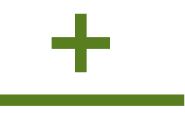For capital projects of all shapes and sizes, a clear and well-defined Scope of Work (SOW) provides a common understanding and basis between the owner and the contractor during project execution.
The Scope of Work is a key part of the Request for Quote (RFQ) process. An RFQ, or Request to Bid (RTB), usually contains the following parts:
- Contract type
- Commercial terms
- Technical scope/Scope of Work document
- Schedule
In this article, we will provide information on what a capital project Scope of Work is and its key components.
What Is a Capital Project Scope of Work?
A capital project Scope of Work is a written description of the project that highlights the project objectives, features, requirements, and outcomes. It typically addresses two main objectives—the Scope of Facility and the Scope of Services:
- Scope of Facility: The Scope of Facility is a description of the physical plant and equipment to be designed and installed. In other words, this describes what is to be built.
- Scope of Services: The Scope of Services is a description of the engineering, procurement, and construction services to be provided. This typically includes a deliverables list that outlines the deliverables by discipline that will be produced in a particular project.
The Scope of Work may be an independent document or may be rolled into the contract.
Key Components of a Scope of Work
A strong Scope of Work and a robust definition of the project can minimize your chance of change orders, hidden costs, and schedule delays. Requirements for Scope of Work depend on the phase of the project.
As an EPC contractor, we receive Scopes of Work in all shapes and sizes; some are better and more fleshed out than others. In this article, we will be laying out some common components for a capital project Scope of Work of the Execution Phase (detail engineering and design through construction) of a project.
- Project location: The address for the project location should be clearly documented in the Scope of Work. This section may also reference applicable documents such as a general facility layout, structural steel/civil drawings, and mechanical piping drawings.
- Equipment: All equipment to be installed should be specified in this document.
- Project summary: A general summary of the project should be included in the Scope of Work. While the project as a whole is summarized for context, the scope specific to the contractor should be clearly stated in a Scope of Work document. For example, if your project involves installing a large piece of process equipment, but you only need the contractor to perform work once the equipment has been set, this should be specified.
- Applicable drawings and documentation: Minimum drawings/information at the start of detail design (for an “in-plant” project) should include complete P&IDs, equipment layout, and equipment drawings. Technical specifications should include engineering specifications and quality assurance/quality control requirements. Lists should include line lists, tie-in lists, equipment lists, instrument lists, and motor lists. HSE considerations may also be included in the Scope of Work.
- Responsibility matrix: A responsibility matrix, or Division of Responsibility (DOR), should be included to specify who does what. For example, sometimes owners purchase equipment, and sometimes contractors purchase equipment. Purchasing requirements include an Approved Manufacturers List (AML).
- Project outcomes: The overall expected outcomes for the project should be clearly defined in the Scope of Work.
- Project deliverables by service: Project deliverables are often laid out in accordance with the Scope of Services.
- Project deliverables by discipline: Project needs and deliverables may also be further separated, typically by discipline, in the Scope of Work document (e.g. process, mechanical/piping, civil/structural, and instrumentation and electrical).
- General construction requirements: If construction is included in the Scope of Services, project owners often specify some general requirements for construction activities. This can include things like general health, safety, and environment (HSE) requirements; extra hazardous work procedures; quality assurance requirements; insurance; construction equipment and materials; inspection requirements; permits; and others.
- Schedule: Schedule is typically referenced in a capital project Scope of Work, but is typically an individual document included in the RFQ/RTB.
H+M Industrial EPC: Delivering Capital Project Success Since 1988
For more than 30 years, H+M Industrial EPC has provided leading capital project management services to the energy, chemical, and terminal and logistics industries using our proven EPC approach, highly established work processes, and highly experienced team.

The H+M Industrial Team
For over three decades, we have provided best-in-class capital project management services to Energy and Chemical industries through our proven EPC approach. We are dedicated to providing trust, experience, and efficiency through all stages of engineering, procurement, and construction--on budget and on time.

Partnering with H+M Modular
H+M Modular, a division of H+M Industrial EPC, specializes in custom fabricated equipment, modules, and skids for energy and chemical industries. The approach emphasizes the potential for decreased risk through more controlled fabrication, leading to enhanced quality and safety, reduced labor costs and construction times, improved labor availability, and solutions to geographic challenges. We are dedicated to providing trust, experience, and efficiency through all stages of traditional and modular construction projects using our proven EPFC approach, If you're considering modular fabrication, we invite you to connect with us to learn about how modular solutions can improve project outcomes.





